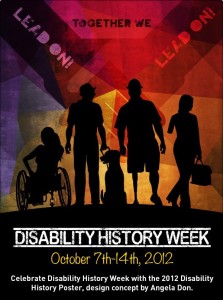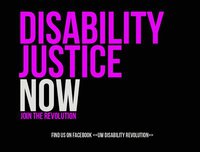On Communication and Double Standards: David Smukler’s Critique of the Theory of Mind Theory of Autism
Rachel Cohen-Rottenberg
Union Institute & University
Fall-Winter semester, 2011-2012
The Theory of Mind (ToM) theory of autism posits that autistic people lack a core brain module that would enable them to understand the perspectives of other people and empathize with their thoughts, feelings, and intentions. In “Unauthorized Minds: How ‘Theory of Mind’ Theory Misrepresents Autism,” David Smukler carries out a thorough-going critique of the ToM theory, discussing its history, shining a light on the largely unquestioned assumptions on which the theory is based, exposing the limitations of the research, and making clear the dehumanizing impact of the deficit-driven nature of the theory on autistic people. I found the paper not simply a persuasive piece of work, but a brilliant tour-de-force regarding all of the problems inherent in the construction and continued acceptance of the ToM theory. Smukler breaks down the core assumptions of the theory in great detail, adducing evidence from a number of studies, ranging from early ToM tests on primates to Simon Baron-Cohen’s more recent Empathizing-Systemizing (E-S) theory of autism. He presents his own core assumptions explicitly and uses them consistently in his critique.
Smukler’s concerns about the ToM theory originate not from a scientific interest in autism research, but from his experience as the father of an autistic so. Throughout his son’s life, Smukler has found that his own observations and experiences have contradicted the conclusions of researchers, particularly with reference to empathy and ToM (Smukler 2005, 12). In order to make sense of this disconnect, Smukler does not approach the problem from the perspective of science, because he does not hold to the idea that science can ever be objective. Instead, he proceeds from the perspective of social constructionism, arguing that all truth is created in social contexts and that the questions that researchers ask, the decisions they make regarding what evidence is most compelling, and the conclusions they draw all derive from socially constructed value systems (Smukler 2005, 16)
Thus, Smukler argues that all research is inevitably informed by value-laden assumptions, and he outlines what he considers the eight core assumptions that drive autism research (Smukler 2005, 14). One such assumption is the belief that all of the features of autism derive from a single, core disability, rather than from a constellation of neurological differences. For adherents of the ToM theory, impaired ToM is that single, core disability. According to Smukler, because ToM adherents have assumed impairment rather than neurological difference, and because they have chosen to look for a single cause of a complex condition, they concentrate on the ToM theory to the exclusion of all other explanations for autistic perception (Smukler 2005, 14-15). I’ve long felt that, were the researchers to loosen their grasp on the ToM theory, they might be able to see an autistic person’s difficulty understanding the perspectives of non-autistic people in a completely different light. They might understand that it could derive from an experience of the sensory and emotional world so different from the norm that for an autistic person to discern what a typical person might feel in the same situation becomes very difficult. And they might also see that they themselves have parallel ToM difficulties when it comes to understanding the experiences of autistic people. Smukler’s discussion of the ways that researchers embrace the unitary theory of autism helped me understand why they still grasp so firmly to the ToM theory.
Not surprisingly, Smukler makes extended use of the social model of disability. This model asserts that one can only be disabled in relation to an accepted norm, that such norms are never neutral, and that disability is therefore a social construct (Smukler 2005, 12). The social model often stands in opposition to the medical model, which views disability as an inherent deficiency that must be cured. Smukler’s adherence to the social model becomes clear when he argues that autistic people should not be assigned sole responsibility for breakdowns in communication across neurological lines, as often happens when people blame such breakdowns on what they refer to as autistic communication impairments. Because communication always entails the efforts of at least two parties, Smukler reasons, arriving at an understanding of the other is always the responsibility of everyone concerned. He writes: “Both communication and social interaction, by definition, require more than one person, and difficulties in either area should properly be located between individuals and not within one individual.” (Smukler 2005, 17) He thereby implies that a communication difference becomes an impairment only when others expect normative communication and do not make the effort to bridge the gap. By this logic, one could also argue that autistic people should not be the only ones assigned ToM difficulties. To do so is to set up an arbitrary norm that everyone should be expected to understand “normal” minds, but that no one should be expected to understand atypical minds.
Like Smukler, I am a strong proponent of the social model of disability, and I found his critique very compelling. I have long felt frustrated by the methods and conclusions of the researchers regarding ToM and empathy in autistic people, and when I read Smukler’s paper, I felt as though I’d found an ally. In particular, I appreciated his discussion of the ways in which scientists cherry-pick the data to support their assumptions. For example, Smukler does an excellent job exposing the double standard by which researchers interpret the results of false-belief tests. When autistic children fail the tests, researchers cite this failure as proof of a lack of ToM in autism, but when non-autistic children fail the tests, researchers assert the need to find better methods for measuring ToM. Referring to Bloom and German’s 2000 paper, “Two reasons to abandon the false belief task as a test of theory of mind,” Smukler writes that the authors fell prey to this double standard when they “argued compellingly that failing false belief tasks does not demonstrate that a child lacks a theory of mind, but they did not question the assumption that it is the lack of a theory of mind that makes children with autism differ from most other children, despite their vigorous critique of the false belief tasks that were the basis for such an assertion.” (Smukler 2005, 20, emphasis mine)
Further, I was drawn in by the ways in which Smukler calls autism researchers to task for window-dressing their findings to make them appear more scientific. He does a trenchant analysis of the narrative devices used to present the findings, decrying the fact that the results “are presented quantitatively in a narrative style and format appropriated from the natural sciences” and in a way very likely to increase the “legitimacy” and “prestige” of the researchers (Smukler 2005, 15). As a writer, I laud the ways in which Smukler analyzes the style of the research papers, especially when he contrasts the reasonable tone taken by the authors with the dehumanizing impact of their words: “The notion that autism results from or includes a theory of mind deficit goes far beyond impugning the intellect to assert the lack of such characteristics as empathy and emotional depth—traits that are said to ‘make us human.’” (Smukler 2005, 19)
Despite my appreciation of Smukler’s work, however, I feel troubled by his insistence that autism is simply a difference. I agree that we should move away from the medical model of deficiency, but the word “difference” tends to hide the difficulties that many autistic people experience because of the nature of the condition itself. Not all difficulties can be explained by reference to the social model. As a parent called “bbsmum” said in response to my piece “Neurodiversity, Grief, and the Normal Minority” on my Journeys with Autism blog, no amount of social change can make the world any less aversive for her severely autistic son, whose sensory sensitivities are extreme: “All the acceptance in the world can’t change the fact that BB must live in a world where dogs run, babies cry, flies buzz and all the other triggers that make his life so hard.” I don’t think that Smukler’s social constructionist approach would have lost any credibility if he had given a nod to these kinds of difficulties. After all, difficulty is not the same as deficiency. In fact, one could easily argue that extreme sensitivity is indicative of an overabundance of perception rather than a deficit
This criticism aside, I consider Smukler’s paper a “must-read” for anyone who wants to know more about why the research into autism and empathy is so deeply flawed. It is an excellent treatment of all the ways in which the ToM theory does not measure up to the standards of hard science and provides an excellent example of how to bring the social model of disability to bear on the critique of autism research.
References
Bloom, Paul and Tim P. German. “Two reasons to abandon the false belief task as a test of theory of mind.” Cognition 77, no. 1(October 16, 2000): B25–B31. doi:10.1016/S0010-0277(00)00096-2.
Journeys with Autism. “Neurodiversity, Grief, and the Normal Minority.” http://www.journeyswithautism.com/2011/05/18/neurodiversity-grief-and-the-normal-minority/. Accessed November 30, 2011.
Smukler, David. “Unauthorized Minds: How ‘Theory of Mind’ Theory Misrepresents Autism.” Mental Retardation 43, no. 1 (February 2005): 11-24. doi: 10.1352/0047-6765(2005)43<11:UMHTOM>2.0.CO;2.
© 2012 by Rachel Cohen-Rottenberg









CarolAnn Edscorn
12/11/2012 | 9:15 pm Permalink
May I add my 2 bits? I do presentations about autism. I am 58, diagnosed with Asperger’s Syndrome in 1995 at age 41. My BFA is in Theater, I earned an MS in Public Policy Analysis, Health & Education issues analysis, and also a graduate certificate in ASD (and I have tried to have them switch to ASCondition). Here is what I do with ToM…
So here’s the social story which is used to decide who has empathy, who can put himself in the shoes (EW!) of another person.
Sally & Ann are walking home. They each have baskets, and Sally has marbles in her basket. They go into Sally’s house and into the living room, where they play for awhile. Sally leaves the room. While Sally is gone Ann switches the marbles into HER basket. The Big Empathy Question: When Sally returns, where will she think HER marbles are?
LOST my friends, her marbles are lost.
First of all, the interviewer lost me at two girls walking home with baskets.
Do you know any girls who walk around with baskets? Where are they going? From where are they coming? Are they playing truant? What time of day is it? When they enter the home, why do they not greet Sally’s MOM? Where are the adults in these young children’s lives? Aren’t MARBLES a boys’ game-mostly? Did they ask permission to use the marbles? Why are they playing in the living room and not the play room or bedroom? If Sally left the room to pee I hope she washes her hands and if she is getting food I hope she brings some to share…
And I utter all this at high speed!
ToM does not make sense unless it is, indeed, deficit driven. Even then i question it. As I question Central Coherence Theory and Executive Function Theory.
So thank you for sharing this social constructivism and I have read a few other of your essays and shared them. I will probably quote some in my next Illuminating Autism workshop!
BEST!
dennis
11/2/2013 | 6:31 am Permalink
The – the researchers – DO ‘know’ what they are actually doing. Theory-of-mind is a myth – a ‘legitimizing myth’. Their purpose, as is the rule for MOST individuals and groups afflicting autists, is to USE those same autists – as tools – so as to increase their own social dominance. By the way, that approach is an effectual one: all rewards in the normalistic world are apportioned on the basis of how socially I dominant one is.